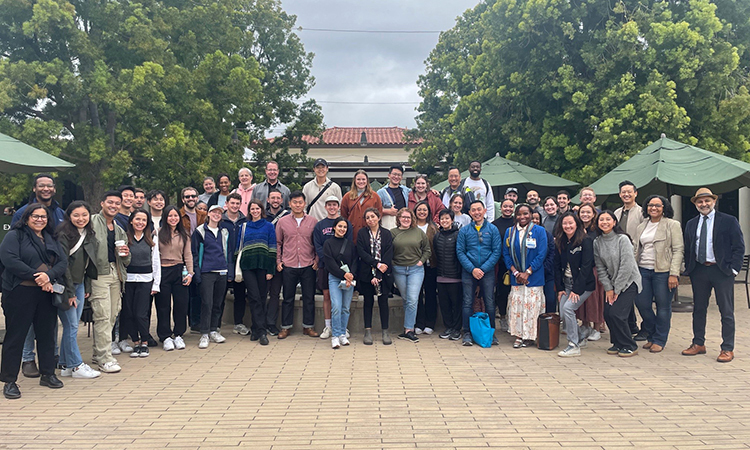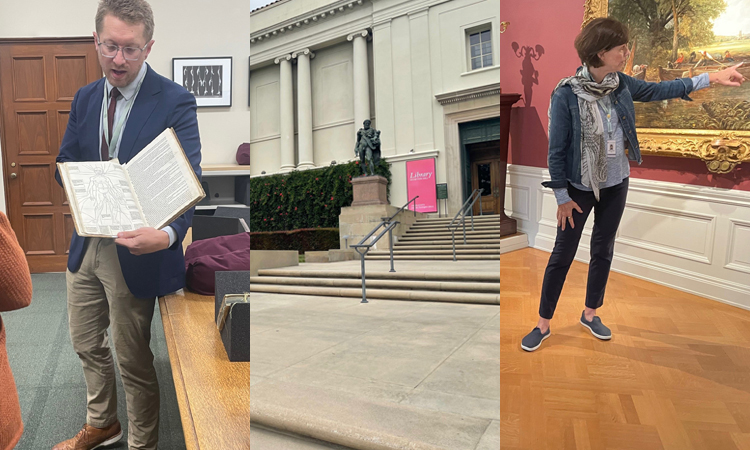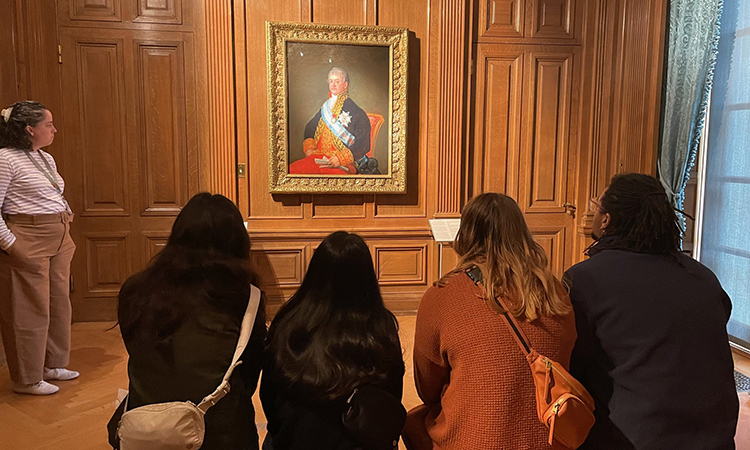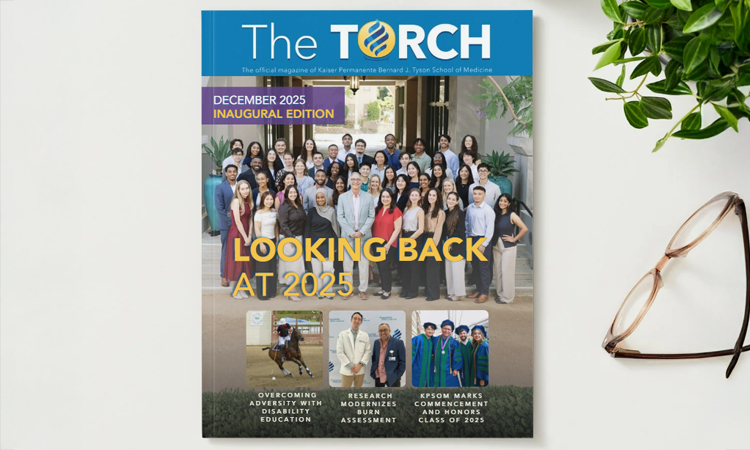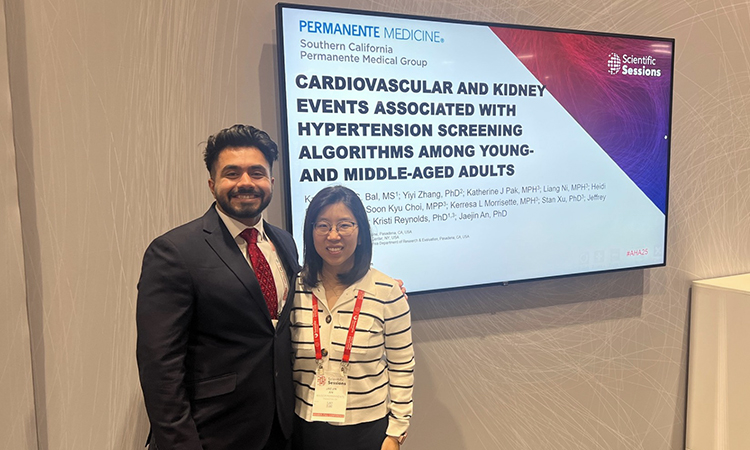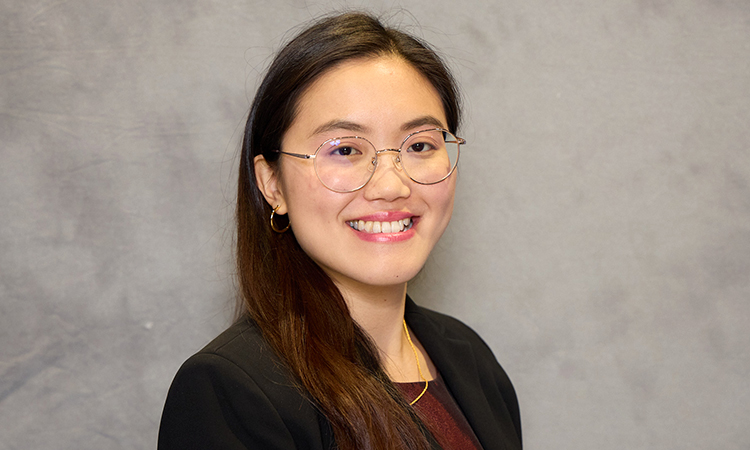When Deepu Gowda MD, MPH, MS, Kaiser Permanente Bernard J. Tyson School of Medicine (KPSOM) Assistant Dean for Medical Education and Narrative Medicine Lead, first interviewed for his role at the school in the winter of 2018, he visited The Huntington Library, Art Museum, and Botanical Gardens, located nearby in Pasadena, California. The experience had a profound effect on him.
He thought The Huntington would be an ideal place to bring KPSOM students to learn because of the intellectual and aesthetic exploration the institution encourages by highlighting the beauty and mystery of natural, artistic, and literary worlds. Dr. Gowda’s dream of partnering with the institution came to fruition on April 25 as KPSOM’s Class of 2024 spent a half day at The Huntington as part of the final REACH session, just weeks prior to their graduation. In REACH—an acronym for reflection, education, assessment, coaching, and health and well-being—students venture away from their usual science-based coursework to focus on topics such as health and well-being, narrative medicine, and equity, inclusion, and diversity (EID).
The day’s activities were framed around concepts of narrative medicine—a branch of the health humanities that encourages engagement with creative works such as literature, visual art, film, and expressive writing—which is an essential component of REACH intended to develop students’ skills in close observation, self-awareness, and empathy while building connection with classmates. The day was also co-created by Nicole Lawson, PhD, KPSOM Faculty Director of Inclusive Curriculum, and Carol Rojas, EID Analyst, to critically examine the self and other in relation to the system at large.
“The Huntington is a place that powerfully calls forth one's curiosity and wonder of the world [which is what] we wish for our students and is necessary for vital, creative, and effective work as a physician and leader,” said Dr. Gowda. “We sought to conclude the REACH curriculum in a poetic fashion, allowing students to spend time with one another and to allow solitary time to contemplate and reflect on their four years at the school and consider what lies ahead.”
